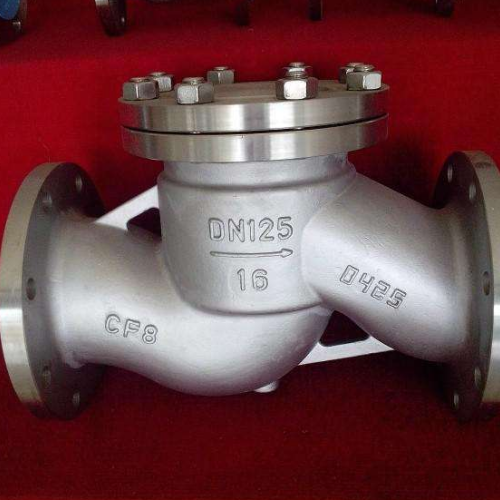Understanding the Function and Benefits of Expansion Bellows in Piping Systems
Understanding Expansion Bellows Joints A Comprehensive Overview
Expansion bellows joints are crucial components designed to accommodate thermal expansion and contraction in piping systems. They play a vital role in various industries, including mechanical engineering, oil and gas, power generation, and HVAC systems, by maintaining structural integrity and ensuring operational efficiency. This article delves into the functions, applications, and importance of expansion bellows joints, providing insight into their design and practical utility.
What Are Expansion Bellows Joints?
Expansion bellows joints are flexible connectors typically made from materials such as stainless steel, rubber, or other elastomers. They are engineered to absorb movements caused by thermal expansion and contraction, vibrations, and misalignments in piping systems. Essentially, they serve as a buffer, allowing for movement without causing stress on the pipes or connected equipment.
The construction of expansion bellows usually consists of one or more convolutions or folds that enable them to elongate or compress while maintaining a seal. These convolutions grant the bellows the flexibility needed to respond to axial, lateral, and angular movements, making them indispensable in many applications.
Key Functions of Expansion Bellows Joints
1. Accommodating Thermal Movement As temperatures fluctuate, materials expand and contract. Expansion bellows joints are designed to manage these changes without compromising the integrity of the pipeline. This function is critical in systems that experience significant temperature changes, such as steam pipelines or exhaust systems.
2. Vibration Isolation In industrial applications, machinery often generates vibrations that can be detrimental to connected pipes. Expansion bellows help isolate these vibrations, reducing the risk of damage or failure in piping systems.
3. Compensating for Misalignment Misalignment can occur due to various factors, including installation errors or ground settling. Expansion bellows can flex to compensate for these misalignments, ensuring that the pipeline maintains its intended path and function.
4. Preventing Leakage A well-designed expansion bellows joint can create a tight seal, preventing leaks in pressurized systems. This is essential for the safe operation of systems carrying hazardous or expensive fluids.
expansion bellows joint

5. Extending Lifespan of Equipment By absorbing stresses and movements, expansion bellows joints can significantly extend the lifespan of piping and attached equipment, reducing maintenance costs and downtime.
Applications in Various Industries
Expansion bellows joints are used in a broad spectrum of applications across different industries
- Oil and Gas In the oil and gas industry, expansion bellows are used in pipelines, refineries, and offshore platforms to accommodate thermal stresses and vibrations. - Power Generation Power plants utilize expansion bellows in steam and water pipelines to ensure safe operation under varying temperatures and pressures. - HVAC Systems Heating, ventilation, and air conditioning systems incorporate expansion bellows to manage thermal expansion and vibration within ductwork and piping.
- Chemical Processing In chemical plants, bellows joints assist in handling corrosive substances and managing temperature fluctuations, ensuring worker safety and equipment reliability.
Design Considerations and Selection
When selecting an expansion bellows joint, several factors must be considered, including the operating environment, the types of movements to be accommodated, pressure ratings, temperature ranges, and compatibility with the fluids being transported. The design should also consider the longevity of the materials used to ensure durability and reliability.
Certification and adherence to industry standards are also essential in the selection process. Ensuring that the expansion bellows meet specific ratings and codes can prevent costly failures and enhance overall safety.
Conclusion
In summary, expansion bellows joints are vital components of many industrial systems, providing necessary flexibility to manage thermal expansion and vibrations while maintaining pipeline integrity. Understanding their functions, applications, and design considerations is crucial for engineers and technicians involved in system design and maintenance. By implementing high-quality expansion bellows joints, industries can enhance operational efficiency, extend equipment lifespan, and ensure safety in their processes. As technology continues to evolve, the functionality and design of expansion bellows are likely to improve further, contributing to even greater reliability and effectiveness in the systems they serve.
-
The Key to Fluid Control: Exploring the Advantages of Ball Valves in Industrial SystemsNewsJul.09,2025
-
The Versatile World of 1, 2, and 3 Piece Ball ValvesNewsJul.09,2025
-
Stainless Steel Ball Valves: The Ideal Choice for Efficient Flow ControlNewsJul.09,2025
-
Optimizing Fluid Control with Ball Float ValvesNewsJul.09,2025
-
Manual Gate Valves: Essential for Control and EfficiencyNewsJul.09,2025
-
Everything You Need to Know About Butterfly ValvesNewsJul.09,2025
-
The Versatility of Wafer Type Butterfly ValvesNewsJul.08,2025




